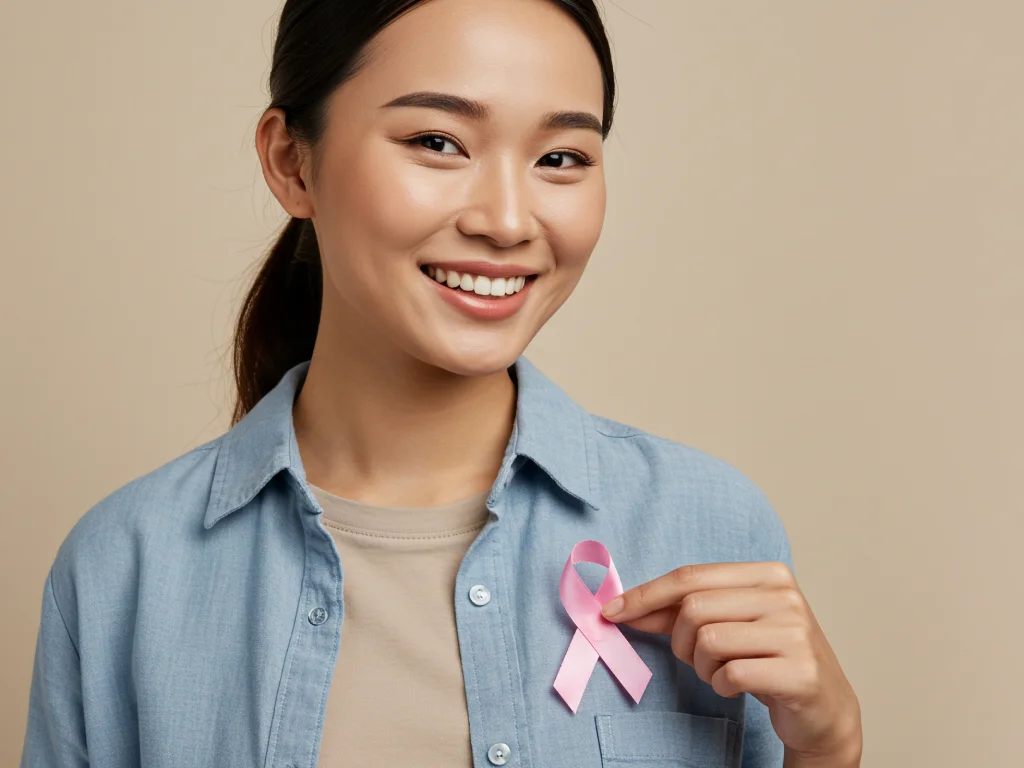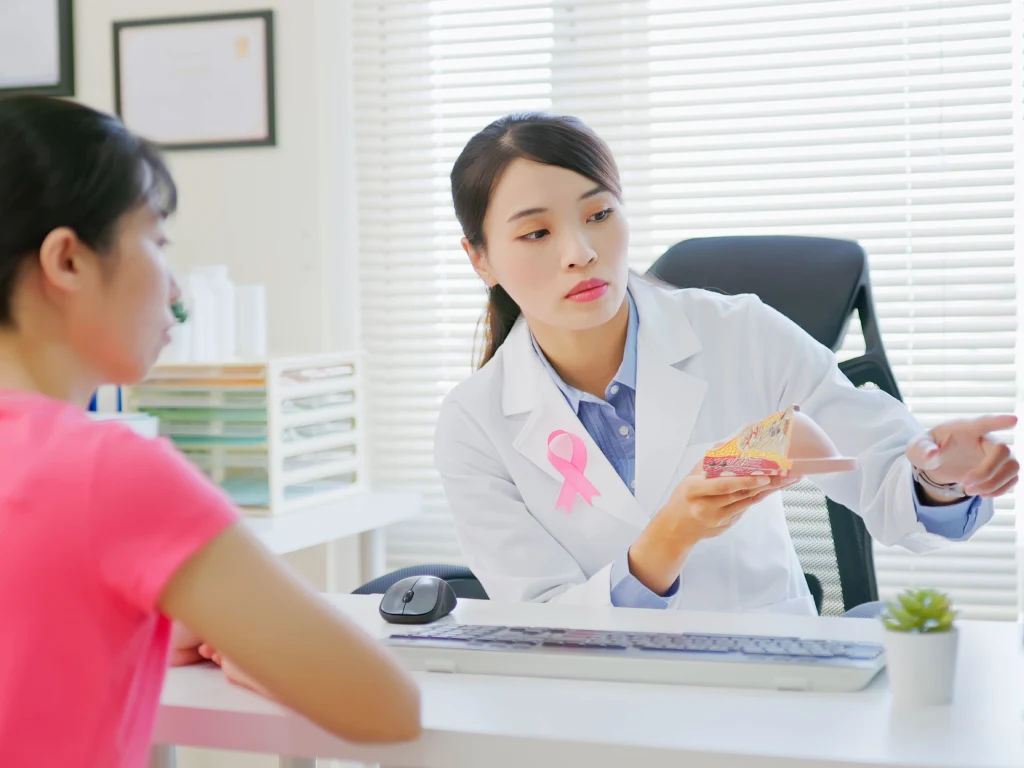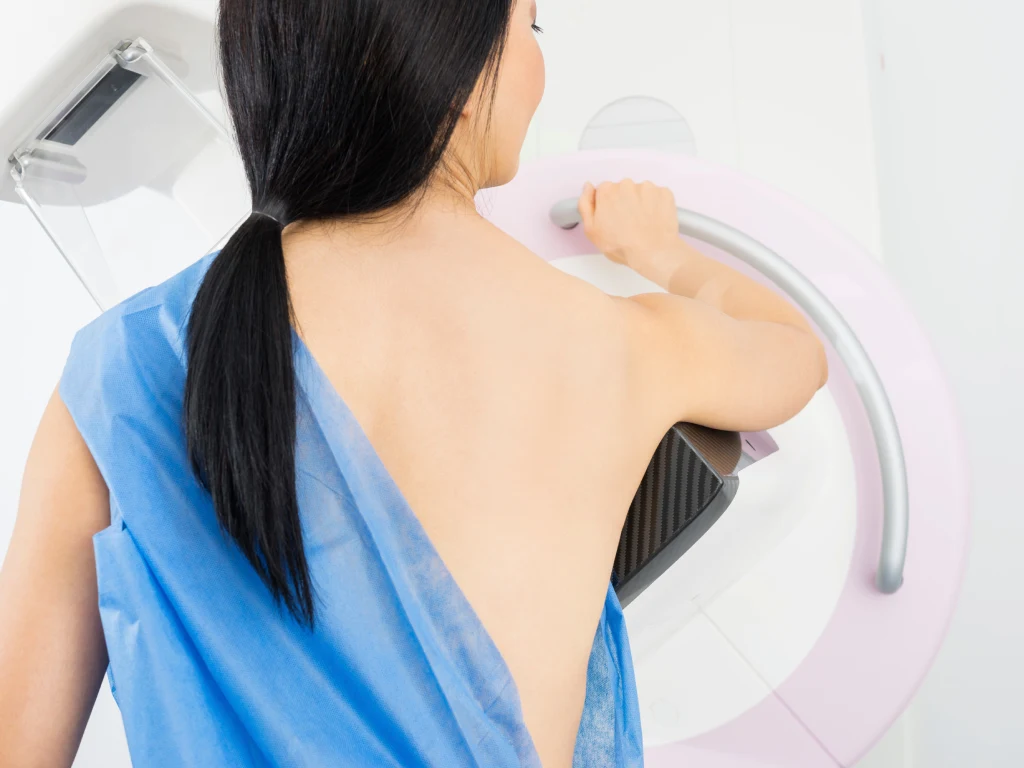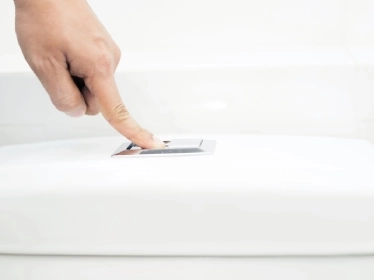
Breast cancer is more common than many realise, with about 1 in 12 women in Singapore diagnosed during their lifetime1. While it mainly affects women, men can also develop breast cancer, though rarely.
The good news? Breast cancer is most treatable when found early. Take the time to understand the importance of regular breast screening. It can make a lasting impact on your wellbeing and empower you to support both yourself and those you care about.
What is Breast Cancer?
Breast cancer is a malignant tumour which occurs when breast cells become abnormal and divide without control or order. Although risk increases with age, younger women are not immune. That’s why early detection through regular breast screening is essential.
Are you at risk?
All women are at risk of developing breast cancer, and this risk increases with certain factors. Some risk factors, such as gender, age, or environmental exposure, are non-modifiable and cannot be changed, while others are modifiable as they are linked to lifestyle choices.
Recognising these factors helps you and your doctor create a breast cancer screening plan that suits your needs.
Common breast cancer risk factors2 include:
- Age: Breast cancer risk increases with age, with most cancers diagnosed in women over age 50
- Family history: Breast or ovarian cancer in close relatives
- Genetic factors: Known genetic changes such as BRCA1/2
- Lifestyle factors: Obesity, physical inactivity, alcohol, or smoking
- Reproductive history: Having your first child later in life or not having children
However, many women who develop breast cancer have no family history or obvious risk factors. This is why routine breast screening remains important.
Why Breast Screening Matters
Breast screening doesn’t prevent cancer from developing, but it can prevent a late diagnosis, and that can make all the difference. Here’s how regular screening helps protect your health:
- It spots signs you may not feel.
Mammograms can identify tiny changes such as microcalcifications and small tumours that are invisible to the eye and too small to be felt. This enables doctors to identify potential issues before breast cancer symptoms appear. - It leads to earlier diagnosis.
Breast screening can help more women detect cancer at an earlier stage. In Singapore, early-stage (stage I) diagnoses have risen from roughly one-third to over half in recent years3, reflecting improved early detection. Detecting cancer early often means smaller tumours, simpler treatment, and better recovery. - It saves lives.
Regular mammogram screening can make a life-saving difference by improving survival rates and often reducing the need for intensive treatment. Early detection gives women the greatest chance for long-term health and wellness.
Once you understand your personal risk and the benefits of regular breast screening, the next step is to know when and how to get screened.
When and How to Get Screened?

Breast Screening methods
Breast screening methods include:
1. Breast self-examination
Women are encouraged to perform a breast self-check every month, ideally a week after menstruation begins. Those who no longer menstruate may find it helpful to choose the same date each month for consistency. Any changes in the breasts, such as lumps, swelling, redness, skin changes, nipple changes or nipple discharge, should be reported to a doctor.
Being familiar with how your breasts normally look and feel through regular self-exams can help in identifying unusual changes early.
2. Clinical Breast examination
If you are 40 years old or older, it's recommended to have your breasts examined by a doctor or a breast care nurse once a year. This exam involves both a visual inspection and a physical check of the entire breast and underarm area for any unusual changes. Not all breast changes indicate cancer, so further diagnostic tests may be needed to determine the cause.
3. Mammogram screening
Regular mammograms are the most reliable way to detect breast cancer, even before lumps can be felt.
| Under 40 | Routine mammograms are usually not needed for average-risk women under 40. However, breast cancer can also occur in younger women. Regional studies indicate that breast cancer incidence among women aged 15 to 39 has been rising across Southeast Asia4. If you have symptoms or higher risk (for example, strong family history or a known genetic change), seek medical advice about evaluation and the timing of imaging. |
| Ages 40 to 49 | Annual mammograms are commonly recommended in Singapore for this age band. Discuss benefits and limits with your doctor. |
| Ages 50 to 69 | Have a mammogram every two years. This interval is designed to catch subtle changes while minimising unnecessary tests. |
Source: National University Health System. (2023). Breast cancer – Screening & prevention. NCIS.
What is a mammogram?
Mammography uses low-energy X-rays to capture detailed images of the internal structure of the breast. During screening, each breast is compressed between two plates, and images are taken from two standard views, the cranial caudal (top-to-bottom) and mediolateral oblique (angled side) projections.
It is a quick and simple procedure that typically takes only a few minutes and remains one of the most effective tools for early detection. Knowing what to expect can help you feel more at ease and confident about the process.
What to expect during a mammogram?

Your appointment typically takes less than half an hour.
- Each breast is imaged from two angles, and additional images may be taken if an area needs a closer look.
- Some brief pressure and discomfort may be felt during the scan, but it should not be painful.
- After your mammogram, results will be reviewed by a radiologist, and your clinic will contact you if further imaging is needed.
Mammogram vs Breast Ultrasound
While a mammogram is the main screening tool for most women in Singapore, your doctor may also recommend a breast ultrasound for several reasons, such as having dense breast tissue, investigating a lump or abnormality found during a physical exam, or following up on a mammogram result.
Breast ultrasound is a non-invasive and generally painless procedure that uses sound waves similar to those used during pregnancy scans. It helps detect lumps and can show whether a lump is solid or filled with fluid.
Both mammograms and ultrasounds work differently but complement each other in detecting changes in breast tissue.
Recognising Changes in Your Breasts
One of the earliest signs of breast cancer may be a visible or physical change in your breasts. It is often noticed during a regular self-check or even while getting dressed. Being familiar with the signs and symptoms of breast cancer makes it easier to spot changes early.
Common breast cancer symptoms to look out for:
- Lumps in your breast or thickened areas that feel different from the surrounding tissue.
- Changes in breast size, shape, or appearance.
- Dimpling or puckering of the breast skin.
- Nipple inversion or discharge.
- Redness or flaky skin on the breast or nipple.
If you notice any of these changes, consult your doctor promptly for assessment. Paying attention to what feels different helps you act early if something seems off.
What should I do if I notice a lump in my breast?
Discovering breast cancer symptoms during a self-exam or on a mammogram can be unsettling but it’s important to remember that not all lumps are cancerous. Many turn out to be benign conditions such as cysts, fibroadenomas, or hormonal changes.
That said, even if a change seems minor, it’s best to see a doctor for an assessment.
A medical evaluation helps:
- Determine whether the lump is benign or requires further tests.
- Ensure early and accurate diagnosis.
- Provide peace of mind and timely care if treatment is needed.
Whether the lump is harmless or requires treatment, early evaluation gives you the best chance to receive the right care at the right time. If you ever feel uncertain, your doctor can guide you through each next step with care and reassurance.
Taking care of yourself isn’t selfish, it’s essential. Real self-care means staying in tune with your body and that includes regular breast cancer screening. Take a moment for yourself and schedule your comprehensive health screening appointment at Healthway Screening Centre.
References:
- National Registry of Diseases Office. Singapore Cancer Registry Annual Report 2022. Singapore: NRDO; 2024.
- World Health Organization. Breast Cancer Fact Sheet. Geneva: WHO; 2025.
- Subbiah D. Breast Cancer Today. In Good Health, Issue 10. National Cancer Centre Singapore; 2024.
- Chen Y, et al. Trends in female breast cancer among adolescent and young adults in Southeast Asia. The Lancet Regional Health – Southeast Asia. 2025.




